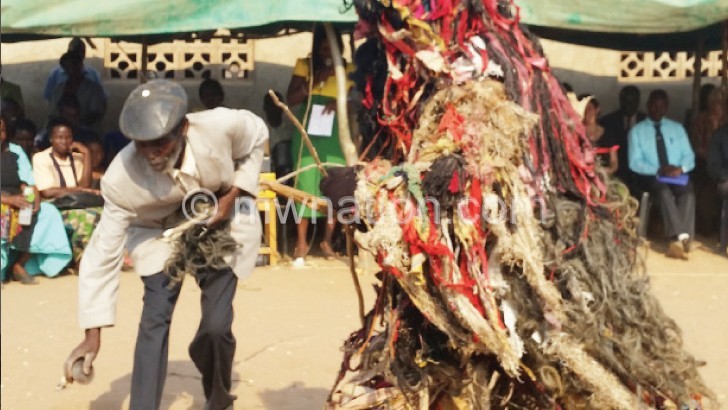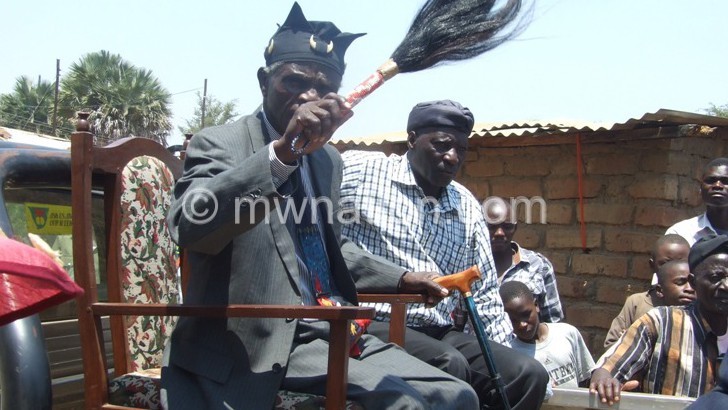Exorcising demons with mkhalachitutu vimbuza
Beliefs dominate lifestyles in Africa and beyond. However, changing times and Westernisation have seen some of the beliefs waning. Some that have survived have lost their relevance.
The vimbuza traditional dance, practised among the Tumbuka, is one such belief.
The vimbuza tradition of present day Malawi is not the same as that of the past.
People know only the dance and not the supernatural powers attached to it. The original vimbuza tradition was for exorcising the demons and, in some parts of the Northern Region, it is called mkhalachitatu vimbuza. Unfortunately, it is slowly fading away.
Many people do not know about this dance and this was evident at the Nanzikambe Arts Café in Blantyre three weeks ago when Dikamawoko Arts Theatre performed the mkhalachitatu vimbuza as part of their performances.
Almost everyone looked lost in the meaning of the dance and it had to take Dikamawoko director Tawonga Nkhonjera to define some of the scenes to the audience.
In a project paper titled Safeguarding Vimbuza Dance, Unesco defines vimbuza a dance performed as part of a traditional healing procedure to cure psychological illnesses. Mkhalachitatu vimbuza is one of the names given to vimbuza dances performed as an exorcism rite when one is possessed by demons or evil spirits.
It is predominantly performed in Rumphi, but has spread to Mzimba, Karonga, Kasungu and other districts. The dance is also performed in Nkhata Bay where it is called masyabi and here it incorporates indigenous variations.
“Vimbuza is a broad name and to it are several traditions attached.
Currently, people are concentrating on the dance as part of entertainment, but there is the famous vimbuza tradition the mkhalachitatu vimbuza. These are those that are performed to people who struggle with silent stupors and vomit when they eat food cooked on mafigha, the three cooking stones. The patient also faints upon receiving sad news such as illness or death of a loved one and to cleanse this the mkhalachitatu vimbuza is performed,” said Nkhonjera.
He said a person possessed is known as chimbuza. During the ceremony, they are directed by spirits on what to wear. Nkhonjera said normally, the chimbuza would wear black, red or white pieces of cloth with markings on their skin in similarly alternating colours.
“A chimbuza doesn’t really dance. They are a response to the reverberating drums, whose tempo and staccato determine how a chimbuza will move in response. In extreme cases, a chimbuza will dance so hard so that at the moment of expulsion of the demons from the body, the chimbuza will experience violent convulsions and even frothing at the mouth,” said Nkhonjera, adding that this is why some people are confused to think chimbuza is epileptic.
He said because the demons have superhuman powers, it is important that a rite of exorcism be performed by an experienced and powerful herbalist. He said the herbalist has a medium that tells him exactly how to exorcise the demons.
Exorcisms are not particular to Africa, nor are they a pagan rite. The Catholic Church mandates priests to exorcise possessed Christians. The emergence of Pentecost churches has also switched the mind of the people in exorcism. Pastors and prophets perform the duty of exorcising the possessed in church.
“In mkhalachitatu vimbuza, once one is exorcised, the formerly possessed regains conscious thoughts with little or no recollection of the exorcism. Public displays of this rite through only dance are merely reenactments because the real vimbuza dancer puts on what is called mangenjeza, a rattling sound producing material whose musical pattern serves as a perfect accompaniment to the drums,” he said.





